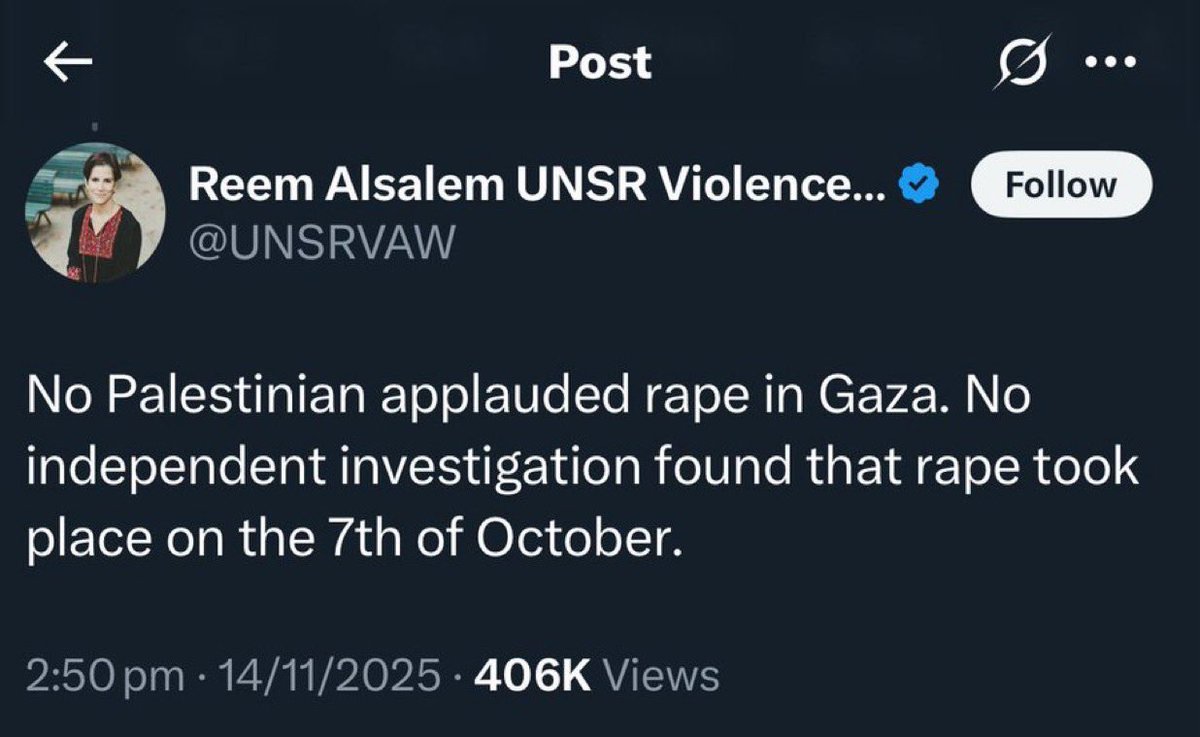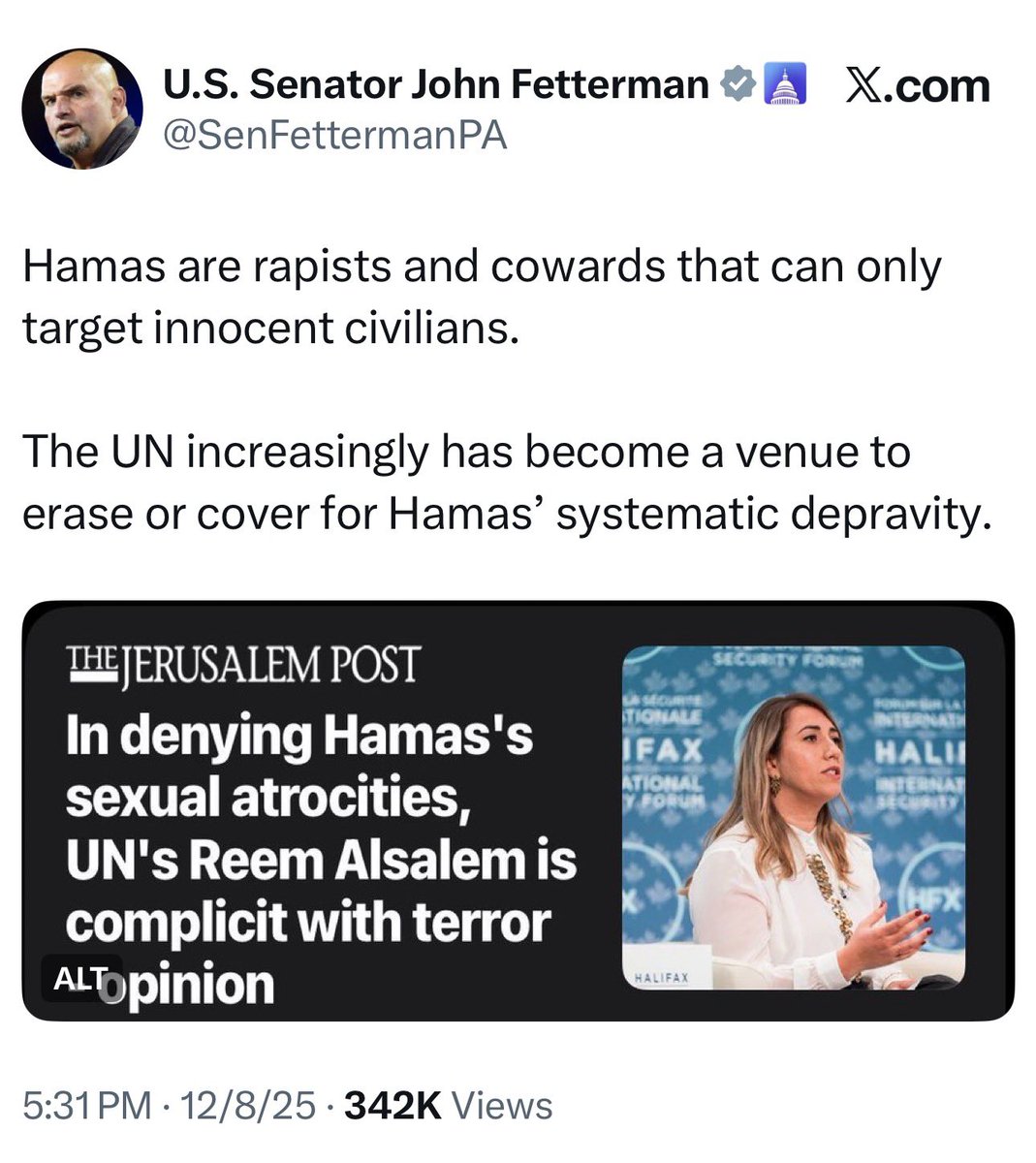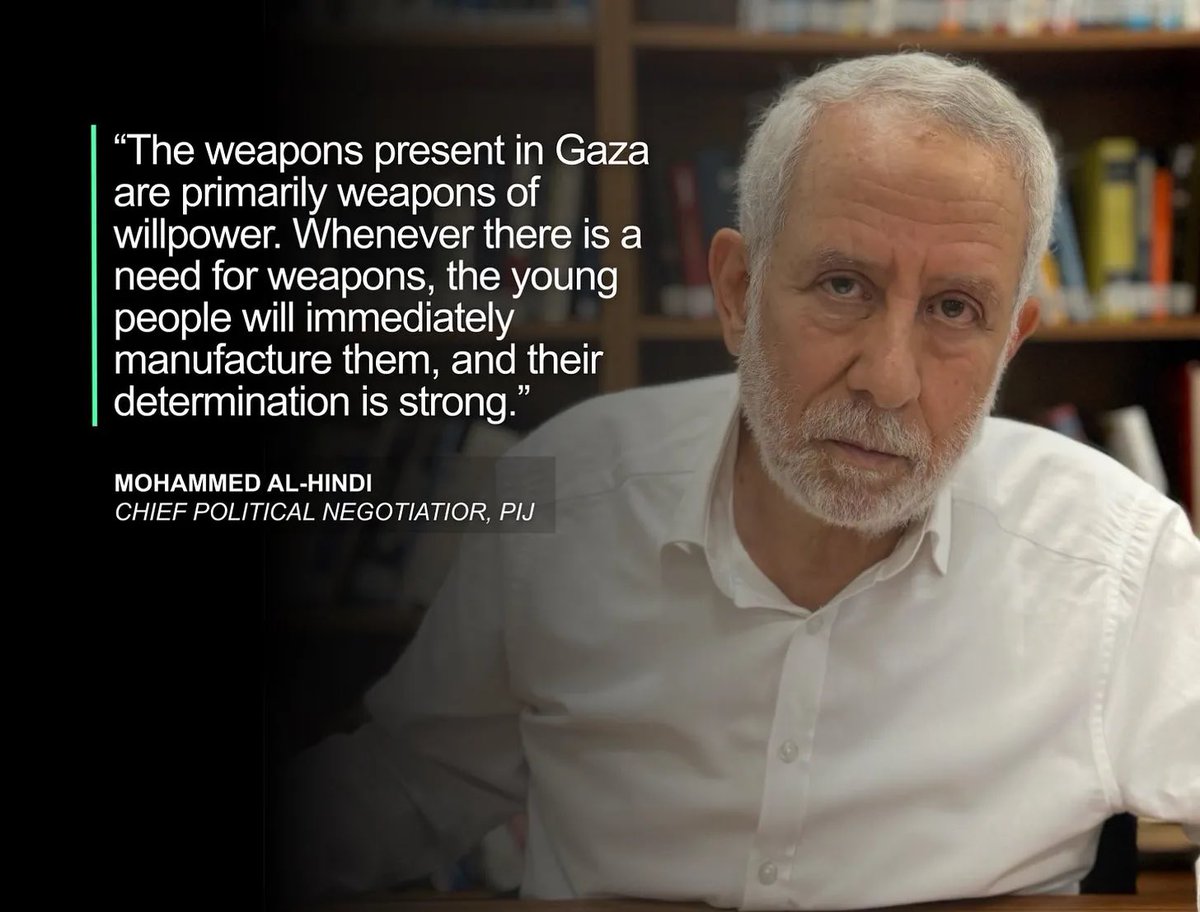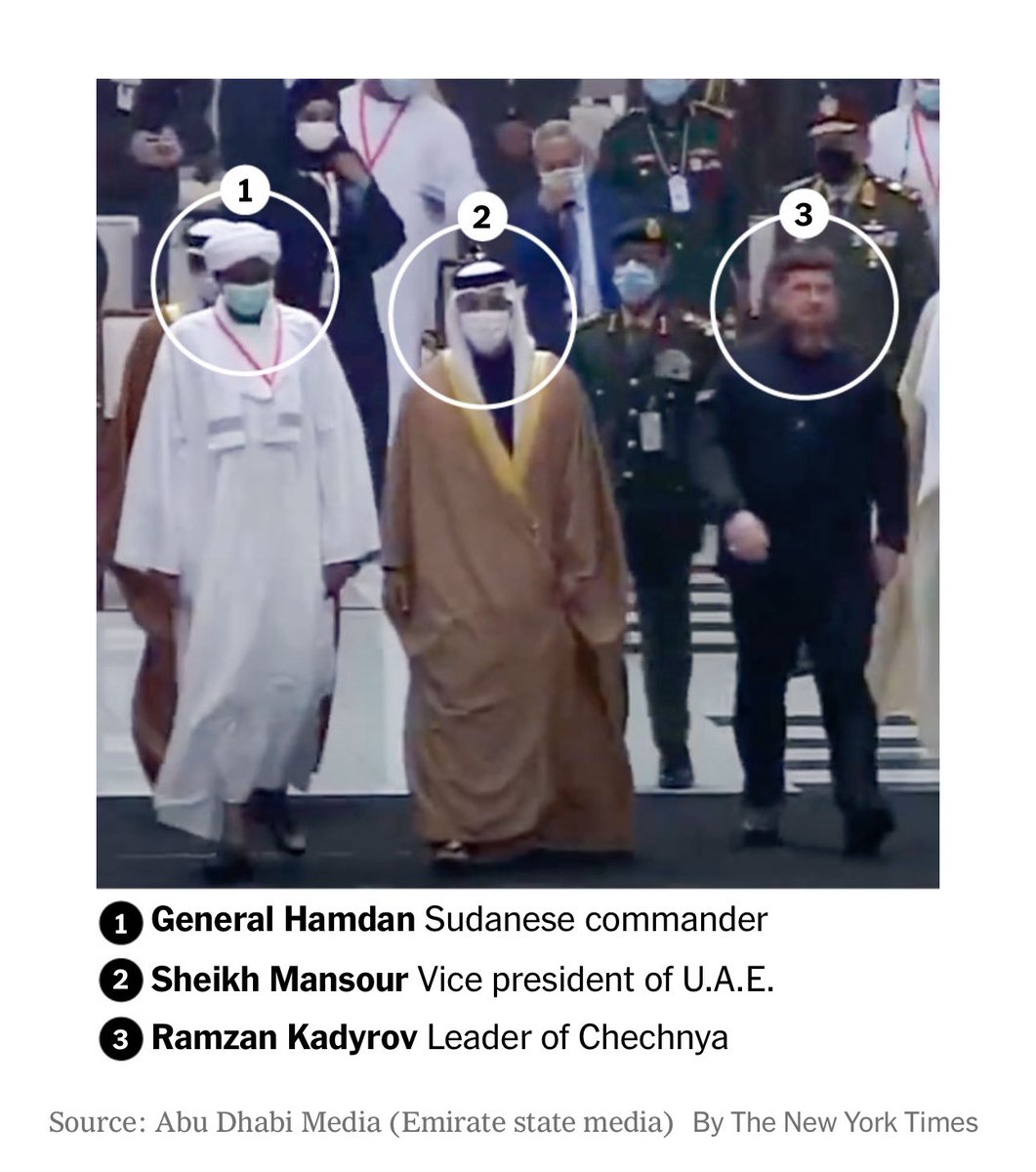🧵NEW: Armed gangs are looting food warehouses across Gaza—and Israeli drones are reportedly targeting the police and volunteers trying to stop them.
Multiple sources, including eyewitnesses and journalists, say the gangs are backed by Israel.
Here’s what’s being reported: 🔽
Multiple sources, including eyewitnesses and journalists, say the gangs are backed by Israel.
Here’s what’s being reported: 🔽
2/ @TareqAzzom Gaza correspondent for Al Jazeera English, reports:
▪️ “Local gangs, reportedly backed by Israel, are looting what remains of Gaza’s food warehouses.”
▪️ Israeli forces, he says, have struck police officers who were trying to stop the thefts.
▪️ “Local gangs, reportedly backed by Israel, are looting what remains of Gaza’s food warehouses.”
▪️ Israeli forces, he says, have struck police officers who were trying to stop the thefts.
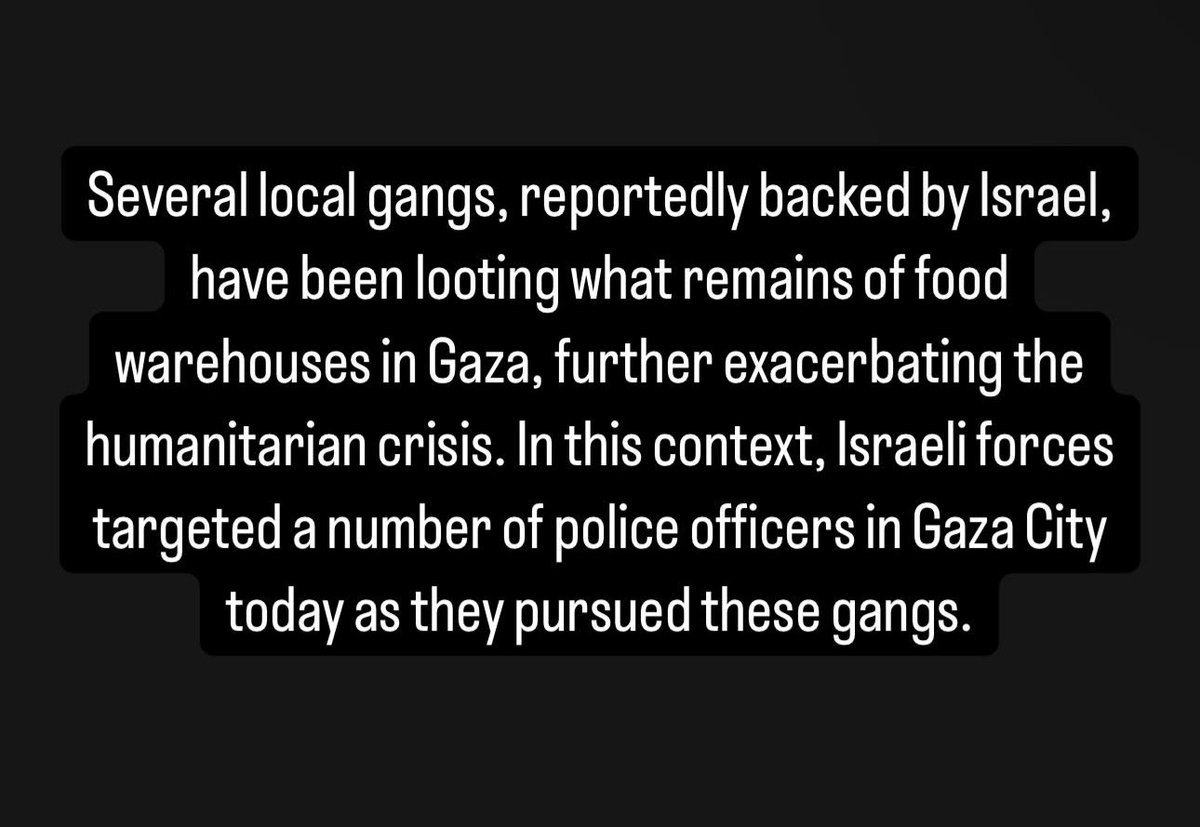
3/ One of the clearest firsthand accounts comes from a volunteer at a community kitchen in western Gaza.
He says armed gangs attacked their facility twice in one day.
The second time, they fired live rounds and broke into a food store serving 1,500+ families.
[Instagram story from @madhoun95]
He says armed gangs attacked their facility twice in one day.
The second time, they fired live rounds and broke into a food store serving 1,500+ families.
[Instagram story from @madhoun95]
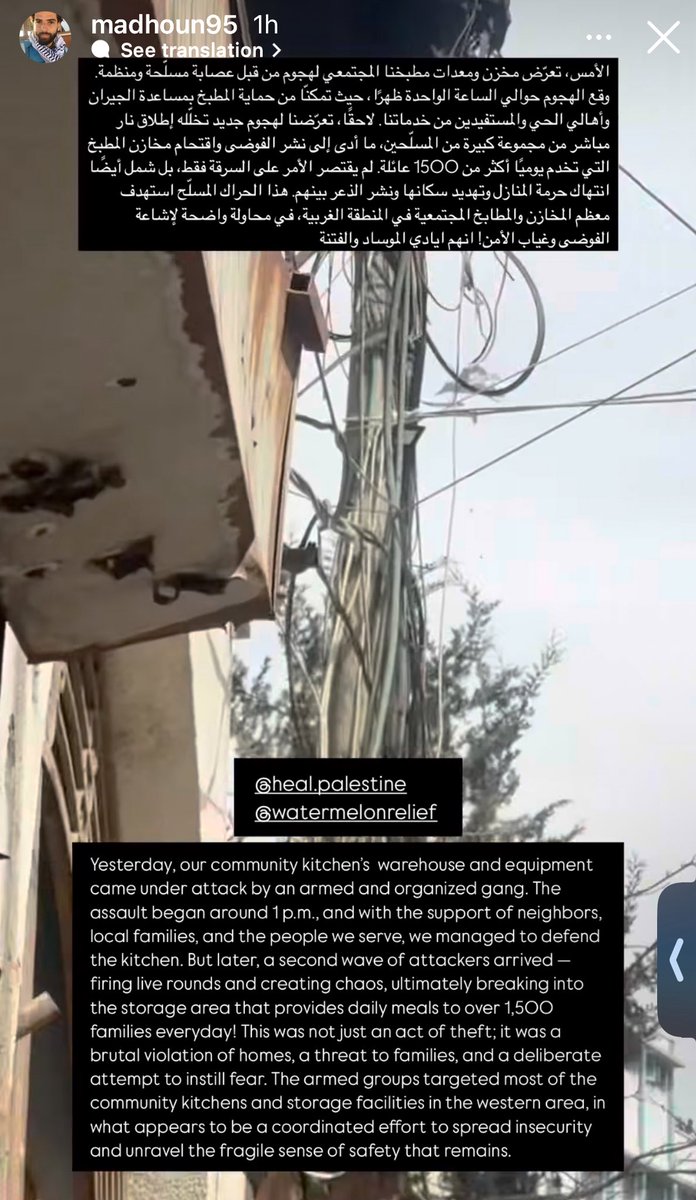
4/ “This wasn’t just theft,” the volunteer wrote. “It was an organized effort to spread fear and dismantle what little safety remains.”
“They are the hands of the Mossad and sedition,” he adds.
He says most community kitchens and food storage facilities in western Gaza have been similarly targeted by looters.
“They are the hands of the Mossad and sedition,” he adds.
He says most community kitchens and food storage facilities in western Gaza have been similarly targeted by looters.
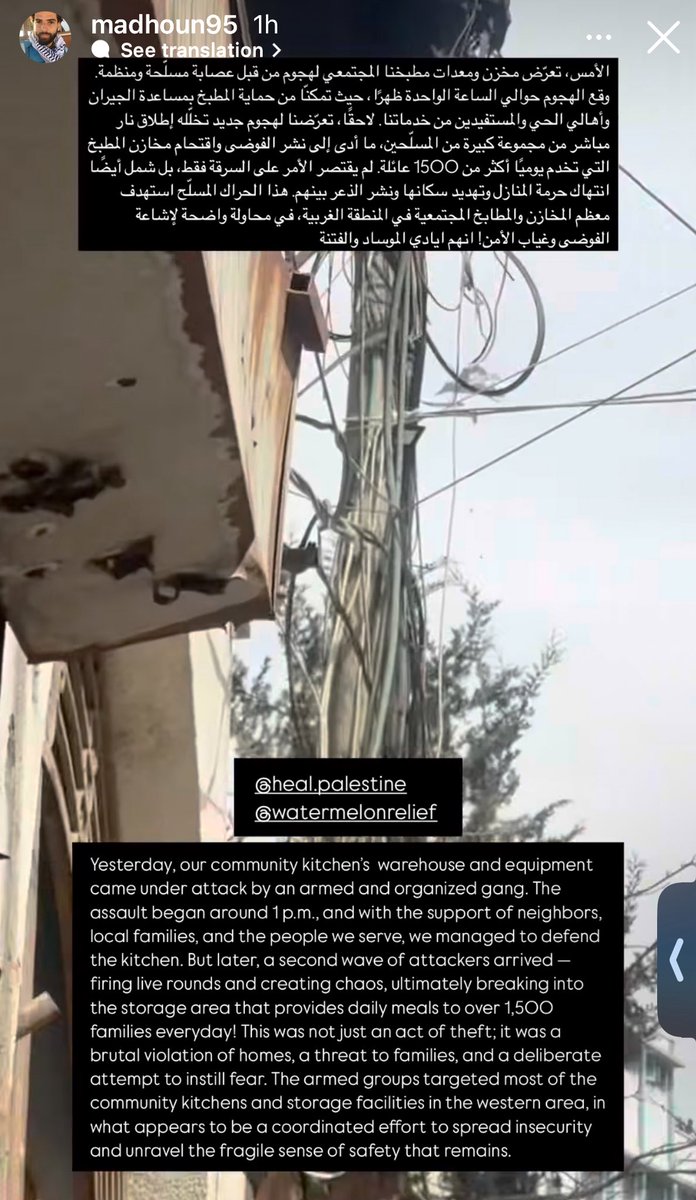
5/ Investigative journalist Mohamed Elzanin has documented three Israeli drone strikes in a single hour on patrols attempting to stop the looting at Al-Thawra and Al-Wahda Streets in Gaza City.
Those targeted, he reports, were community volunteers and local police.
Those targeted, he reports, were community volunteers and local police.
6/ Al Jazeera’s Anas Al-Sharif reports: “Horrifying footage shows Israeli occupation forces targeting civilians and members of local security teams as they attempted to protect their shops from looting and chaos.”
7/ In response, Gaza’s major families are speaking out. The Madhoun family released a formal statement denouncing the looting and calling it part of a broader destabilization strategy. They also called for the formation of a national leadership consisting of heads of municipalities, national institution and popular committees to put an end to these attacks. They warned: “These gangs act in alignment with the goals of the occupation.”

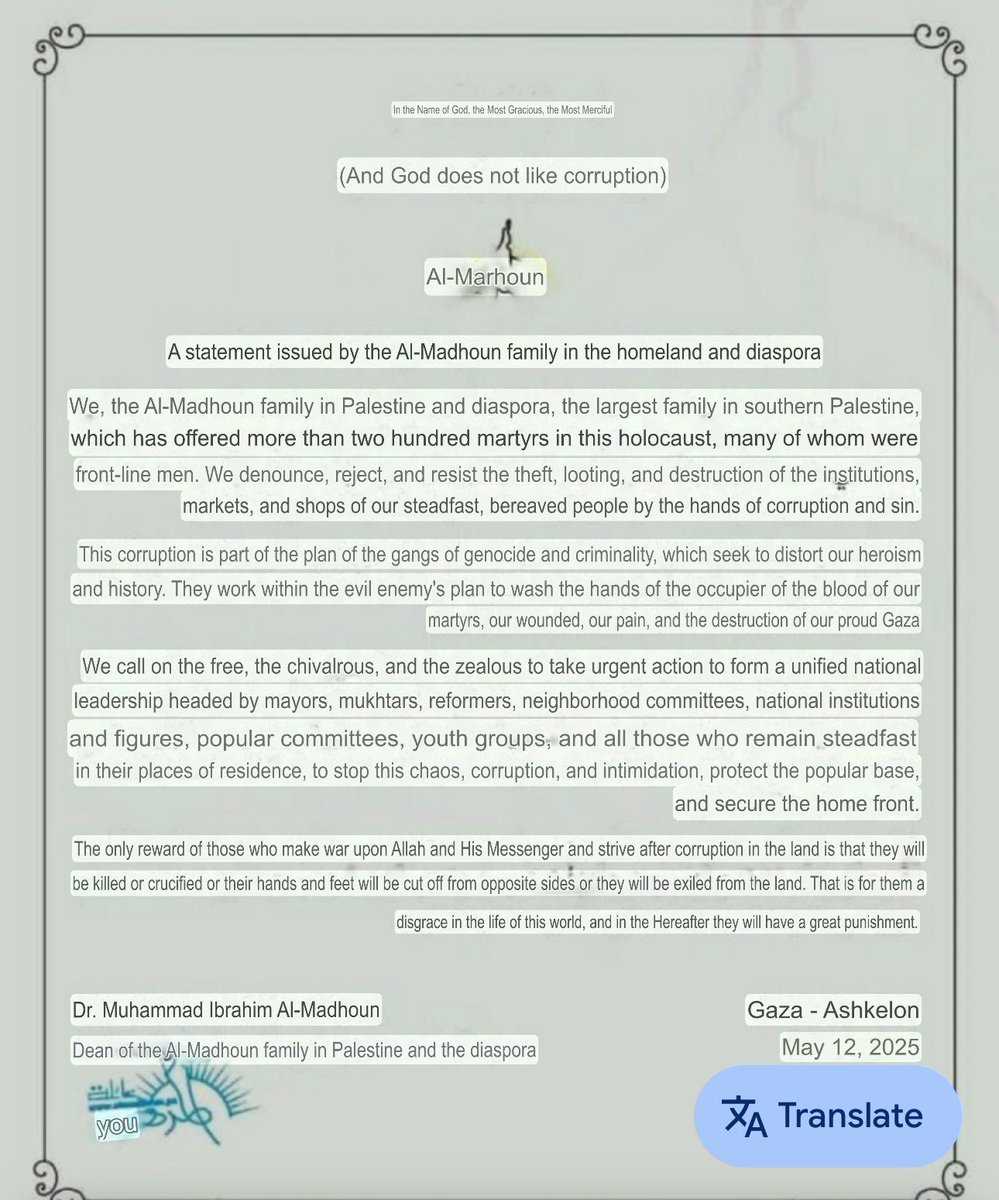
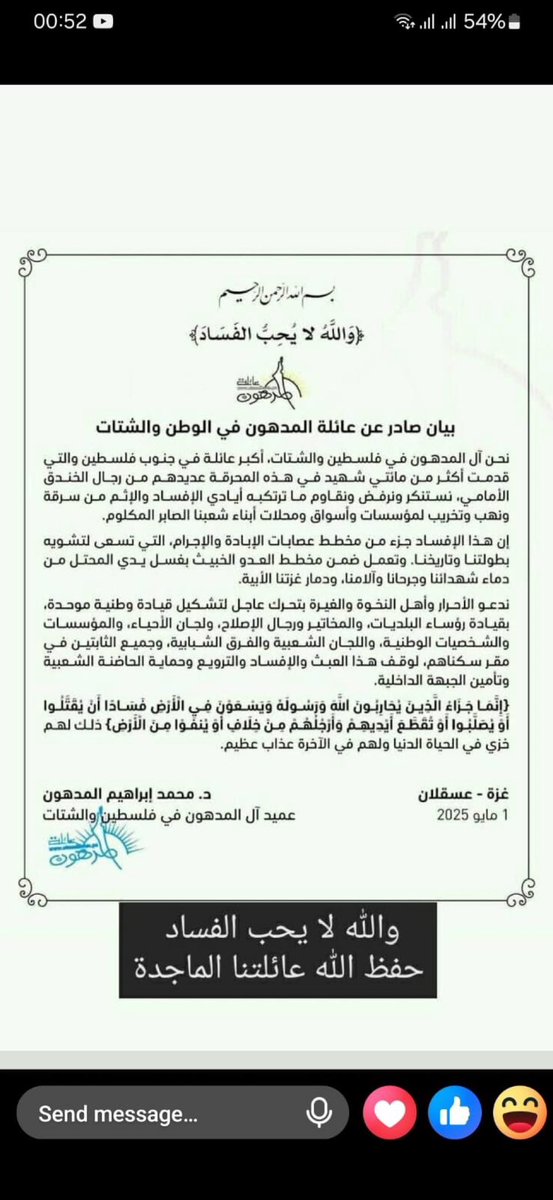
8/ Drop Site contributor @AbubakerAbedW, recently evacuated from Gaza, writes:
▪️ “The Israeli military has assigned gangs to cause chaos and break down public order.”
▪️ He says looting has spread across Gaza. Main targets: warehouses and stores.
▪️ “The Israeli military has assigned gangs to cause chaos and break down public order.”
▪️ He says looting has spread across Gaza. Main targets: warehouses and stores.
https://twitter.com/abubakerabedw/status/1918425071103750327
9/ Officer Asaad Yahya Al-Kafarna was killed in an Israeli airstrike while leading a police patrol pursuing looters in Gaza City, near the Thai Restaurant. According to his family, he was tasked with confronting gangs accused of collaborating with the Israeli military to raid food and flour storage sites in the Al-Nasr area of northern Gaza.
10/ Together, the pattern appears to be:
▪️Israel’s blockade creates famine
▪️Israeli forces then systematically bombs community kitchens
▪️ Organized gangs try to loot remaining supplies at warehouses and storage sites
▪️ Local efforts to stop the chaos—by police and volunteers—are then bombed by Israel
Israeli forces appear to be systematically engineering the collapse of Gaza’s internal order, and the ability to feed Palestinians.
▪️Israel’s blockade creates famine
▪️Israeli forces then systematically bombs community kitchens
▪️ Organized gangs try to loot remaining supplies at warehouses and storage sites
▪️ Local efforts to stop the chaos—by police and volunteers—are then bombed by Israel
Israeli forces appear to be systematically engineering the collapse of Gaza’s internal order, and the ability to feed Palestinians.
11/ Palestinian Authority (PA) President Mahmoud Abbas shared a statement through the state-run WAFA outlet placing the blame on Hamas for the lootings:
“The Presidency expressed its rejection and strong condemnation of the robbery and theft operations carried out by gangs, targeting warehouses of humanitarian aid provided to our people in the Gaza Strip, foremost amongst them the Hamas gangs, stressing that our Palestinian people will not forgive these gangs for their heinous crimes committed in these difficult times they are going through, specifically in the Strip.”
“The Presidency expressed its rejection and strong condemnation of the robbery and theft operations carried out by gangs, targeting warehouses of humanitarian aid provided to our people in the Gaza Strip, foremost amongst them the Hamas gangs, stressing that our Palestinian people will not forgive these gangs for their heinous crimes committed in these difficult times they are going through, specifically in the Strip.”
12/ Gaza’s Interior Ministry has condemned the “actions of collaborators” working with Israel amid the 63-day siege and an 18-month genocide.
The Ministry said Israeli forces struck one of its police units shortly after they thwarted a theft attempt—calling the attack an effort to undermine Palestinian unity. It vowed to intensify operations to pursue and punish those working with the occupation.
A resistance source told Al-Araby that Israel is now actively deploying armed collaborators to loot remaining food supplies across Gaza. The source said these theft attempts have sharply increased in recent days and form part of Israel’s “starvation war.”
The Ministry said Israeli forces struck one of its police units shortly after they thwarted a theft attempt—calling the attack an effort to undermine Palestinian unity. It vowed to intensify operations to pursue and punish those working with the occupation.
A resistance source told Al-Araby that Israel is now actively deploying armed collaborators to loot remaining food supplies across Gaza. The source said these theft attempts have sharply increased in recent days and form part of Israel’s “starvation war.”
More evidence ⬇️
https://twitter.com/dropsitenews/status/1918505281601868125
• • •
Missing some Tweet in this thread? You can try to
force a refresh


